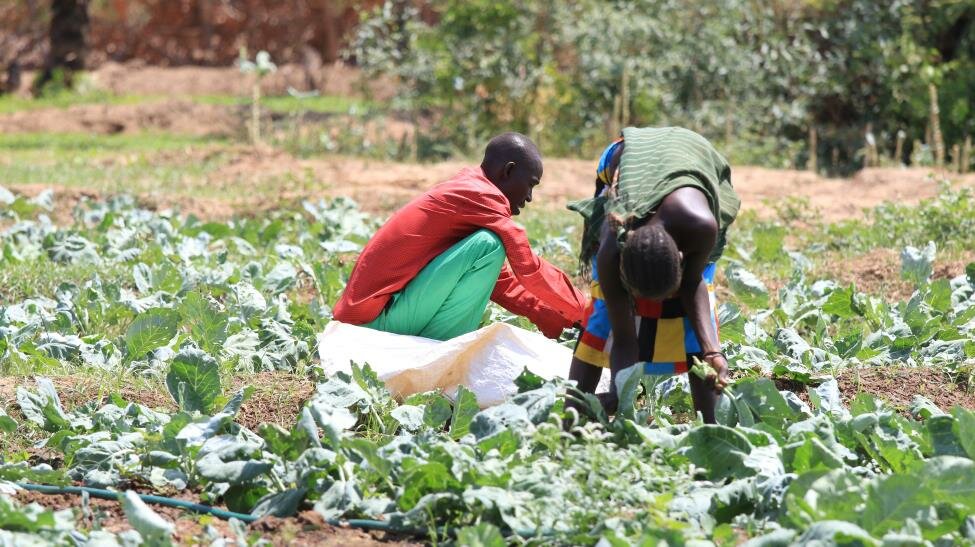Communities in northern Kenya’s arid and semi-arid lands (ASALs) face one big threat to their livelihoods: drought. In recent years, more frequent and intense droughts in the region have resulted in loss of human and livestock lives, emergency food insecurity levels, and severe socio-economic consequences with millions now dependent on long-term humanitarian aid. The ASALs of Kenya span 23 counties – 89% of Kenya’s land mass – and are adversely impacted by drought emergencies, marginalization, and endemic poverty.
USAID Kenya’s Partnership for Resilience and Economic Growth (PREG) has been working in the ASALs since 2013 and coordinates efforts among 26 USAID implementing partners in the region, including Kenya’s National Drought Management Authority (NDMA) and county governments. The effort seeks to amplify and streamline USAID’s investments focused on improving and building more resilient and food-secure communities to meet USAID’s overarching resilience goal: a reduction of the humanitarian caseload in the Horn of Africa by one million people.
The PREG model is unique in that it integrates both humanitarian and development partner activities working with the same people in shared target geographies in northern Kenya to increase community resilience for withstanding current and future shocks.
For almost two years, Africa Lead has supported USAID as the lead learning partner to guide and facilitate PREG partners through a focused and directed learning process to strengthen and improve collaboration and learning efforts. Africa Lead’s scope of work has covered three main objectives: 1) develop and implement a learning agenda for PREG; 2) provide institutional support to NDMA’s Pillar 6: Institutional Development and Knowledge Management, in implementation of Kenya’s Ending Drought Emergency (EDE) Strategy; and 3) support evidence-based policy and investment choices by EDE stakeholders for building resilience and economic growth in target counties.

Members of the PREG – supported Edome Elemae Smallholder Farmers Group in the arid Turkana County harvest a crop of kale. Turkana County, the second largest and poorest county in Kenya, is home to nearly 1 million people, the majority of whom are pastoralists, relying heavily on livestock. Photo credit: Africa Lead
In August 2016, Africa Lead facilitated a PREG learning event, bringing together more than 50 participants from across PREG’s partnership at the national and county levels to develop a learning agenda for the partnership. During the event, PREG partners also adopted a collaborative framework for collective action to ensure sustainability of the partnership’s activities. One of the recommendations to come out of the PREG learning event was the need for joint work planning by PREG partners.
A series of joint work planning workshops were held in Turkana, Isiolo, Garissa, Wajir, and Marsabit counties between January and April 2017. The objective of the workshops was to help participants develop the skills, understanding, and knowledge needed for effective partnership and collaboration, and to identify new areas for collaboration and interventions. The workshops also balanced core knowledge with highly interactive, experiential learning through team building, and peer-to-peer exchange. Participants included USAID implementing partners, county government officials, NDMA representatives, and USAID officials. At the end of each workshop, participants agreed on a county work plan, singled out two sites where they were already implementing different activities, and identified ways to coordinate and integrate their activities to benefit the respective communities.
In order to support the progress of the partnership at the county level following the joint work planning workshops, Africa Lead organized follow-up and support visits to four of the five counties between July and September 2017. The visits were held to: observe the level of completion of activities listed in the work plans, identify evidence of good practice, innovations in collaboration and partnership, and challenges experienced during implementation of the activities.
In Marsabit, nutrition program, Nutrition and Health Program Plus (NHP+), and livestock program, Accelerated Value Chain Development (AVCD), jointly implemented a Training of Trainers activity for community health and nutrition workers. “In Moyale, we were able to conduct a training activity on agri-nutrition together with AVCD. At first, the resources my program had could only reach very few people but because AVCD had a similar activity, we were able to bring [our] resources together and capture more people,” says Galgallo Boru of NHP+. Joint implementation of the activity increased the number of trained health workers from an initial combined target of 280 community trainers to 600, which means all Marsabit County health and nutrition workers have received training.
In Turkana County’s St. Patrick’s Health Centre in Lodwar town, both AVCD and Kenya Rapid are working together with the local church to support the livelihoods of community members. The church has initiated a poultry project while AVCD supports the animal health inspection process and Kenya Rapid is developing a water supply project for the health center.
Across all counties, PREG partners note that the joint work planning workshops helped in setting a clear vision and purpose for the partnership. Partners are now deliberate about identifying sites where they can layer their activities, and regular joint work planning is becoming a more common way of doing things. All county teams hold regular monthly meetings where the partners follow-up on commitments from the joint work planning workshops, make adjustments on their implementation schedules in the layering sites, and coordinate and share data and information. “We have held monthly forums and through those monthly meetings we have been able to discuss areas of synergy, areas where we [can] come together and [fill any] gaps in programming,” says Thomas Musyoki of Kenya Rapid, Turkana County.
